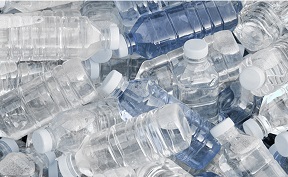Plastic bottle recycling deposit incentive - Arhive
Plastic bottle recycling needs deposit incentive Plastic bottle recycling deposit incentive

Two years ago, the World Economic Forum made a frightening prediction: By 2050, there could be more plastic in the world’s oceans than fish.
Staggeringly, these projected rates of consumption are calculated by weight. One of the reasons plastic packaging is so popular is its lightness. Yet each year, on average, eight million tons of plastic waste ends up in the ocean.
It doesn’t disappear or decompose; it simply breaks down into smaller and smaller shards, until it looks a lot like fish food. Plastic bottle recycling deposit incentive
It’s also choking lakes. Plastic waste in the Great Lakes has been found in concentrations comparable to the Great Pacific Garbage Patch, as high as 6.7 million pieces per square kilometre. Plastic bottle recycling deposit incentive
One of the worst culprits is the bugbear of environmentalists: singleuse plastic bottles. In Ontario, not even half make it to a blue box for taxpayer-subsidized collection and recycling. The rest — about a billion bottles a year — end up in landfills or littering the environment. Plastic bottle recycling deposit incentive
Luckily, there’s a proven strategy to reduce plastic waste: Put a price on it.
Ontario is one of just two provinces without a plastic bottle deposit. It’s time for that to change, says Keith Brooks, programs director with Environmental Defence Canada, speaking from Toronto.
Deposit programs work extremely well, and not just at the Beer Store. Provinces and territories with deposit programs recover between 72 and 95 per cent of polyethylene terephthalate (PET) bottles. Manitoba and Ontario, without deposit incentives, lag far behind at 51 and 50 per cent. Plastic bottle recycling deposit incentive
The market for post-consumer PET is surprisingly strong. Ice River Springs, which employs bottle-to-bottle recycling — making bottles of bottles — proudly states it collects 85 per cent of the PET available from Ontario blue boxes.
“It suggests that there’s a shortage, in fact,” Brooks notes.
Collections could be handled through a combination of retail returns and reverse vending machines, which exchange empty bottles for cash or vouchers for store credit. Vouchers are attractive to retailers, as people tend to spend their credit on site. In an elegant turn, the cost of recycling shifts from municipal taxpayers to producers.
A deposit system for single-use beverage containers also reduces contamination, Brooks notes. “Those bottles end up in their own stream … you get more bottles back and you can actually recycle them at a higher rate because you have a lower contamination rate.”
He explains Environmental Defence has focused on deposit programs rather than a ban on bottled water because “we didn’t think it was that realistic right now.”
Europe is moving in that direction. Last month, the EU voted for an ban on single-use plastics, including straws and cutlery, but the ban does not include plastic bottles, which it aims to collect separately, targeting a 90 per cent recycling rate by 2025.
Canada has made the goal of zero plastic waste a key theme of its G7 presidency. But our actions lag our rhetoric. We currently recycle less than 11 per cent of plastics overall.
“Canada has the worst recycling rate in developed countries in the G7,” Brooks states flatly. But he commends the government for using its platform to put a spotlight on plastics.
The Canadian Council of Ministers of the Environment has produced a draft framework for zero plastic waste as a first step toward developing a national strategy.
“We’re waiting to see what this plastics commitment is going to look like, and whether it will be sufficient to actually deal with the problem,” Brooks notes. “When it comes to single-use plastic bottles, if we set the target high enough, it’s almost certain we’ll end up with plastic bottle deposits because this is a best practice internationally.”
